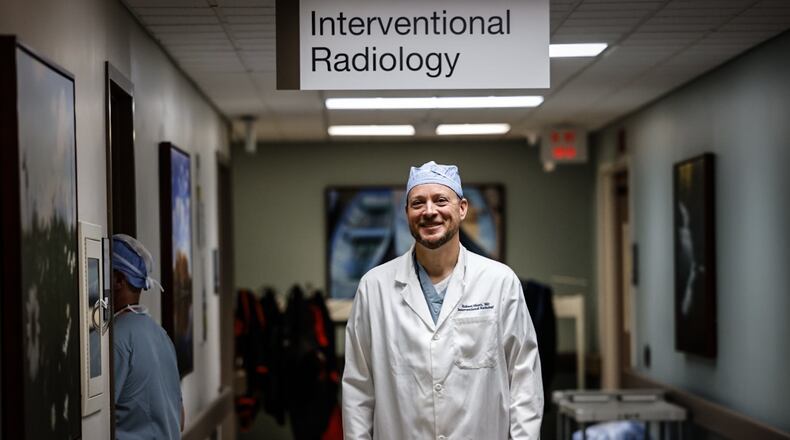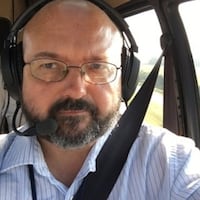With that problem in mind, Short and his colleagues recently opened what they call the “MINT” (Minimally Invasive Nodule Therapy) clinic at the Dayton VA, and center officials say no one else has anything quite like it, at least not in Ohio.
The clinic serves as a one-stop shop for a variety of tests newly diagnosed cancer patients can need — biopsy, PET scan and pulmonary function testing.
The innovation here? Instead of having patients just burdened with a new cancer diagnosis schedule a bewildering assortment of tests at different times and places, take care of those tests in one visit at the Dayton VA —handling in a single visit what might take days or weeks if the tests were scheduled individually.
The experience is meant to be a crucial early step on the road to recovery.
“Dr. Short is our superstar here,” said Rhonda Moore, a spokeswoman for the Dayton VA.
The clinic is downstream of fairly new insight in the field of medicine. About a decade ago, studies concluded that low-dose lung cancer screenings, such as CT scans, have a better chance of spotting lung cancer in its beginning stages — often betrayed by extremely tiny masses or “nodules” in the lungs — than X-rays.
And when it comes to beating lung cancer, finding it early is a crucial first step.
“Finding lung cancer early is our best chance to cure people,” Short said. The balance shifts from merely treating a disease that kills more than 127,000 Americans a year to curing that disease.
Veteran Lynda Theis would agree.
Theis, a Zanesfield, Ohio resident, is an evangelist for the clinic. She was suffering from dehydration, and a visit to Springfield Regional Hospital in September unearthed some deeper concerns. She was referred to the MINT clinic in Dayton.
“A lot of veterans need to know about this,” said Theis, a former smoker.
A cancer diagnosis was confirmed and surgery was scheduled. But she said Dayton VA personnel removed the fear from the process, giving her an easy-to-understand rundown of her options.
“You know, you hear ‘cancer,’ and there’s supposed to be dread,” Theis said in an interview. “But with this whole process, and everybody I’ve dealt with, they have made it so much better.”
“They actually spent an hour talking with me,” she said. “Going through things, just comforting. It’s amazing, to be honest.”
She is scheduled for surgery to remove the cancer on Monday.
“The support I’ve been getting has just been crazy in a way,” said Theis, 56.
“Very few people know that lung cancer kills twice as many women as breast cancer,” Short said.
Lung cancer is a problem for everyone, but veterans seem to be more vulnerable. Short said about 8,000 veterans a year are diagnosed with lung cancer — and 900,000 veterans are thought to be at risk.
“It’s more of a problem for veterans because historically, a higher proportion of our veterans probably were tobacco users,” Short said.
Cigarettes famously were included in soldiers’ rations during the Vietnam War, he noted.
An interventional radiologist, Short aims to use the least invasive methods to determine if a patient has cancer.
“The line I sometimes like to use is, it’s like cutting-edge medicine without the cutting,” Short said with a smile. “It’s like surgery but with more unicorn magic.”
Born on Wright-Patterson Air Force Base 47 years ago, Short earned a bachelor’s degree in biomedical engineering at Wright State University, leaving him free to consider careers in academia, medicine or engineering on graduation.
Short chose medicine and more, attending a seven-year Ohio State program that allowed him to pursue a medical degree and a doctorate in less time than he could get either of those degrees individually.
His PhD zeroed in on cancer therapy, focused on using tiny nanodevices to kill cancer. In that specialty, Short found his attention drawn to interventional radiology.
He doesn’t just sit in the dark reading CT scans or MRI images.
“That’s part of what we do,” Short said. “I think of diagnostic radiologists as the searchers, and the interventional radiologists as the solvers.”
Radiology provides the blueprint. Short’s goal is to heal.
.
About the Author

